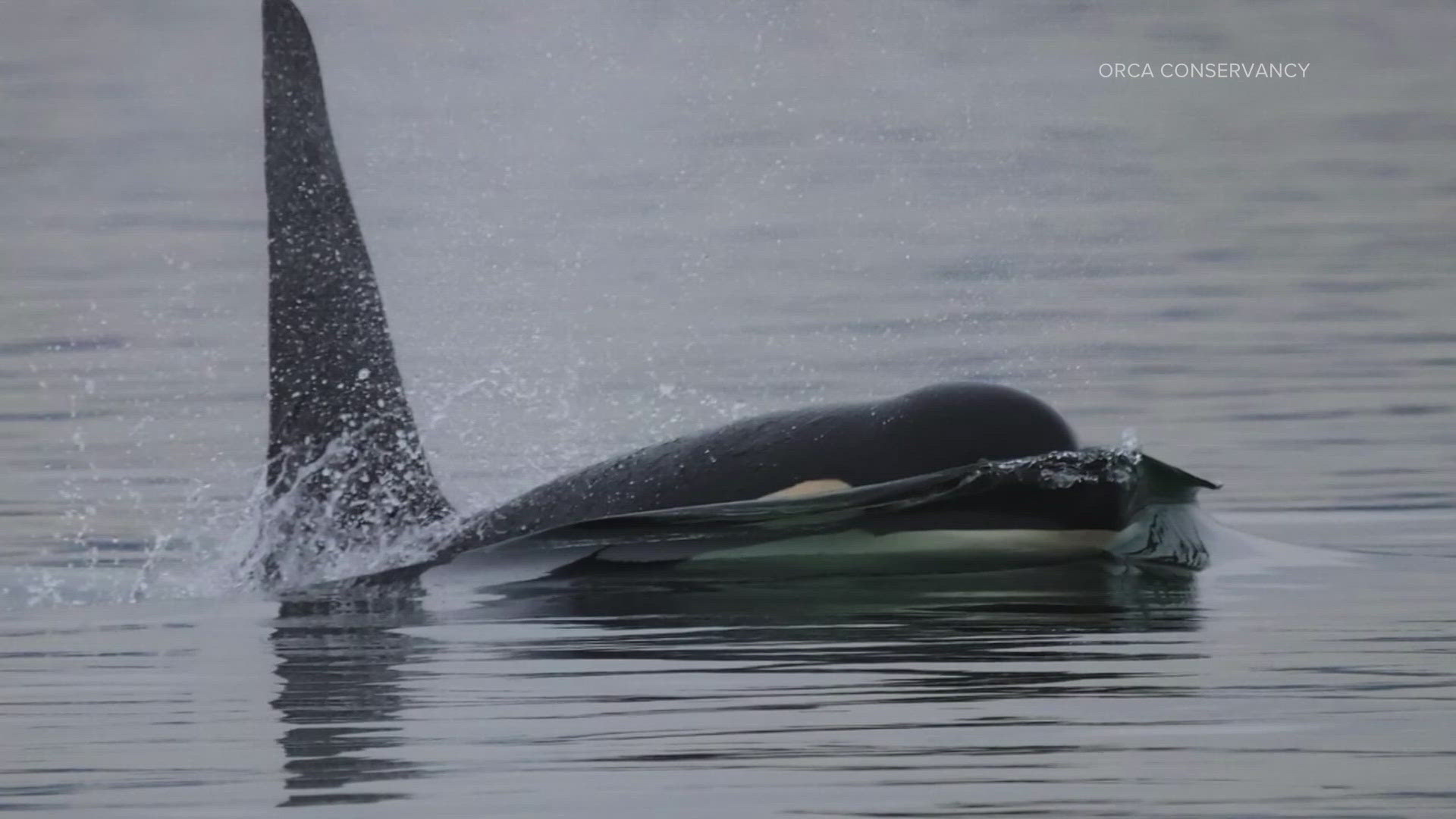Scientists urged Governor Jay Inslee and members of a state orca task force to focus on increasing salmon populations to boost the well-being of Southern Resident killer whales.
While it has been known that dwindling salmon populations have contributed to a lack of prey for orcas, the researchers emphasized in a letter sent Monday that the task force should prioritize this issue.
“Put simply, orca need more Chinook salmon available on a year-round basis, as quickly as possible,” the letter reads.
The Southern Resident population dropped to a 35-year low of 74 orcas over the summer following the death of ailing orca J50. They face several challenges in addition to lack of prey, including pollution and boat noise.
The scientists asked the task force to recommend first increasing spill levels at Columbia and Snake River dams to 125 percent dissolved gas and then remove the Snake River dams entirely.
They argued both these recommendations would cut down on dam-caused salmon deaths and increase salmon access to upstream habitat in the Snake River basin.
“The Snake River basin offers the best potential for large-scale spring Chinook restoration in our region,” the letter reads. “Protecting and restoring salmon access to and from this habitat will have a significant benefit for spring Chinook and should be a top regional priority for addressing orca prey needs.”
Orca issues were put in the spotlight earlier this year when 3 ½-year-old orca J50 died following extensive efforts to save her life. J50 suffered from peanut head, which is a severe loss of fat behind the head. Scientists injected her with antibiotics and tried delivering salmon to her before the orca disappeared from her pod.
A month earlier, grieving orca J35 made national headlines for carrying her dead calf for at least 17 days and 1,000 miles.



